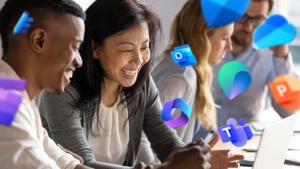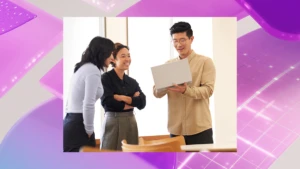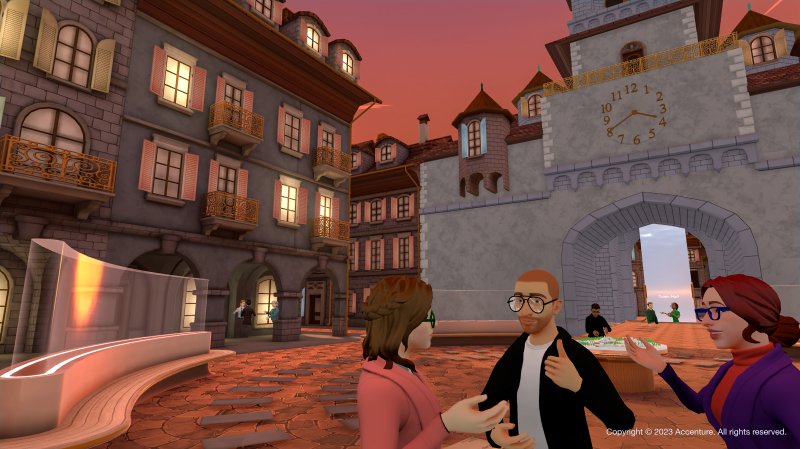
Microsoft Mesh: Creating connections at the World Economic Forum 2023
This week in Davos, Switzerland, attendees of the World Economic Forum’s Annual Meeting can plunge into the ocean, fly over coastal environments, and visit global food marketplaces to engage on worldwide challenges such as marine ecosystem protection, coastal erosion, and sustainable energy transition—all without stepping on an airplane or donning a scuba mask.
Through a partnership among Microsoft, Accenture, and the World Economic Forum (the Forum), we are pleased to demonstrate the Global Collaboration Village (GCV), a metaverse experience built using Microsoft Mesh. Mesh will enable collaboration, presence, and shared immersive experiences from anywhere, on any device—whether that’s a virtual reality headset, PC, or mobile device—and regardless of where you are physically located.
In the GCV, Mesh enables participants from government and corporate entities to collaborate on solutions to the biggest challenges facing our world, without the limitations of physical location or constraints of the real world. Working with the Forum and Accenture as part of the Microsoft Mesh early adopter program, we are using this opportunity to learn, listen to feedback, and improve the product ahead of bringing Mesh capabilities to a broader set of customers and partners.
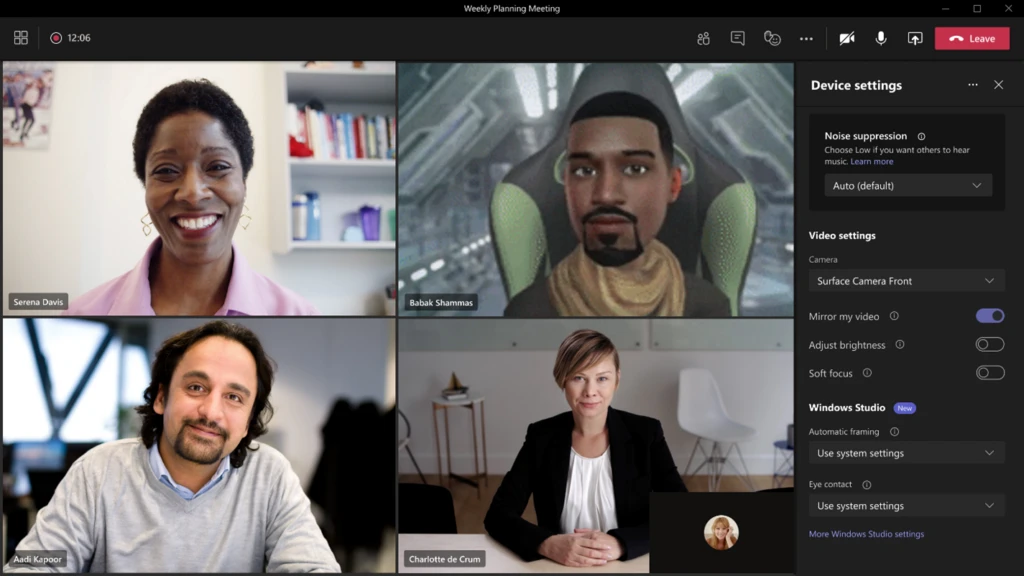
Collaboration and connection are at the heart of the mission of the GCV, and we believe that in the not-so-distant future, the metaverse will play a key role in how we work and solve complex problems together, enabling collaboration that is more inclusive and equitable for participants, and enabling lower carbon impact by reducing travel. We learned through the pandemic how vital it is for people to have rich ways of connecting and collaborating from wherever they are, and we’ve experienced the challenges of doing so in hybrid environments. Microsoft research indicates that 43 percent of business leaders view relationship-building as one of hybrid work’s key challenges. Among employees who have thriving relationships at work, 76 percent report better well-being, 50 percent report higher productivity, and 61 percent are less likely to change jobs. Rebuilding social capital is therefore a business imperative. Our vision for Mesh is to make collaboration more effective, more natural, and ultimately more human in hybrid environments, unconstrained by physical boundaries.
Mesh for Teams
Learn moreMesh enables you to create virtual spaces, like the GCV, where people can interact with one another and with objects in new, fully immersive ways. Personalized avatars provide presence and expression, so you can engage others with eye contact, facial expressions, and gestures. Spatial audio adds dimensionality to sounds and conversations in virtual spaces, enabling you to naturally feel the presence and proximity of others and have side conversations in a larger virtual event. Integration with Microsoft Teams brings these immersive experiences into the place where work happens while enabling you to collaborate with Microsoft 365 applications like Whiteboard, PowerPoint, and other content stored in OneDrive.
The Global Collaboration Village: Immersive spaces for collaboration and connection
The GCV was first demonstrated as a proof-of-concept in May 2022 at the Forum’s Annual Meeting 2022, inspired by challenges that people faced while physically separated during the pandemic, and by the Forum’s need for highly inclusive experiences to enable interaction with a more diverse set of stakeholders. GCV participants shared their delight at the feeling of co-presence and interactivity in the shared virtual space. We also heard a desire to see how far the platform could go to transcend geographical divides, accelerate collaboration and knowledge sharing, and aid in understanding and solving global problems.
Since May 2022, the team enhanced the Town Hall, the event center at the heart of the GCV, and expanded the GCV with a set of immersive spaces. We built stakeholder campuses, where government and commercial Village Partners can build their presence in the GCV, and collaborative centers designed to inspire and connect participants by immersing them in environments for experiential learning, collaboration, and problem-solving focused on important global issues.
World Economic Forum Annual Meeting 2023
Learn moreCollaborative centers in the GCV include the Food Innovation Hub, where participants can learn about and adopt sustainable food production practices. This area includes meeting spaces surrounded by food markets that highlight challenges and successes from around the world. Mesh enables participants to move around and interact with one another together in a virtual space and feel like they really are together. Mesh keeps the visual environment in sync, so participants can look at people and objects at the same time and see others’ real-time gestures and changes in the environment—just as in the physical world.
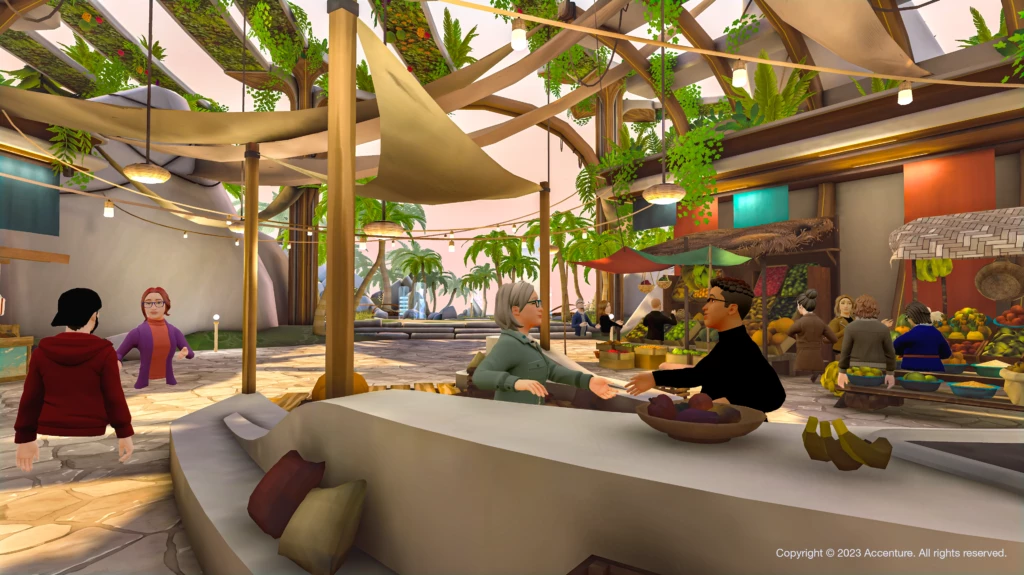
The Deep Sea environment is another collaboration center in the GCV and helps people explore topics related to the health of the oceans and how those support the health of human beings and broader ecosystems. The Kelp Conference Room in the Deep Sea, pictured below, will host a meeting later this week in Davos. In this space, Mesh enables meeting participants to share 3D visual content and information as part of their meeting and collaboration experience. Participants can, for example, focus the discussion on a specific marine animal in the environment with a 3D visual reference to guide the collaboration.
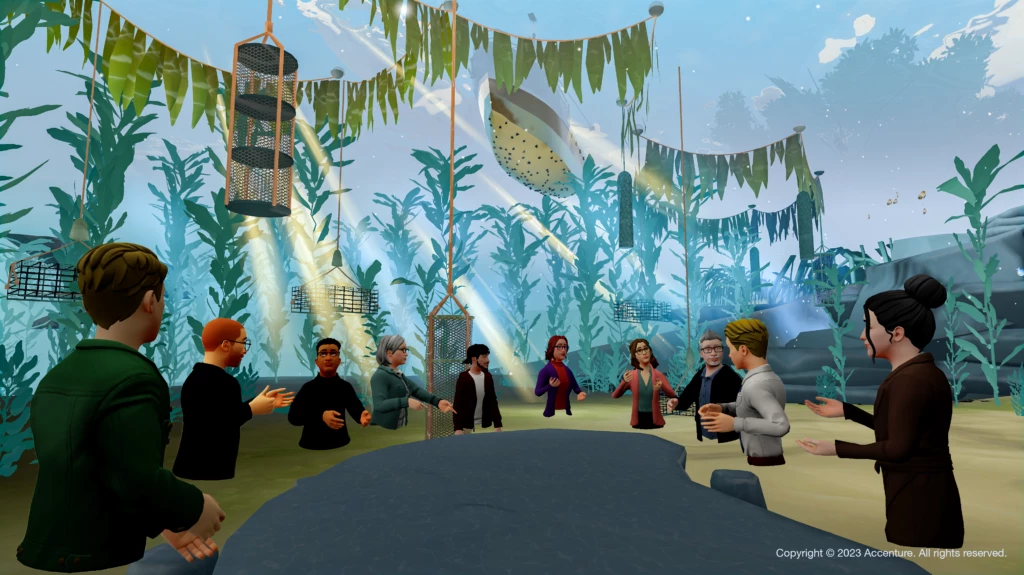
The GCV also includes interactive spaces like the Mangrove Forest, which demonstrates the importance of mangrove ecosystems by showing participants how a coastal environment becomes healthier when mangroves are restored to the area. Here, Mesh enables modeling and visualization of complex processes, in this case, the impact of planting mangrove saplings, showing how the physical environment changes as the mangrove forest grows, providing habitat for marine life and protection from coastal erosion.
The experience of partnering with Accenture and the Forum to build immersive environments like these has fueled our conviction that the metaverse has the potential to fundamentally change the way we communicate and collaborate by overcoming the limitations of the physical world. We look forward to making further progress on the GCV and learning and improving the Mesh platform alongside our customers and partners.
Looking ahead
We are excited to share this early example of what’s possible with Microsoft Mesh. We’ll have more to tell you about Mesh in the coming months. For more information and to sign-up for future updates, visit our website.


